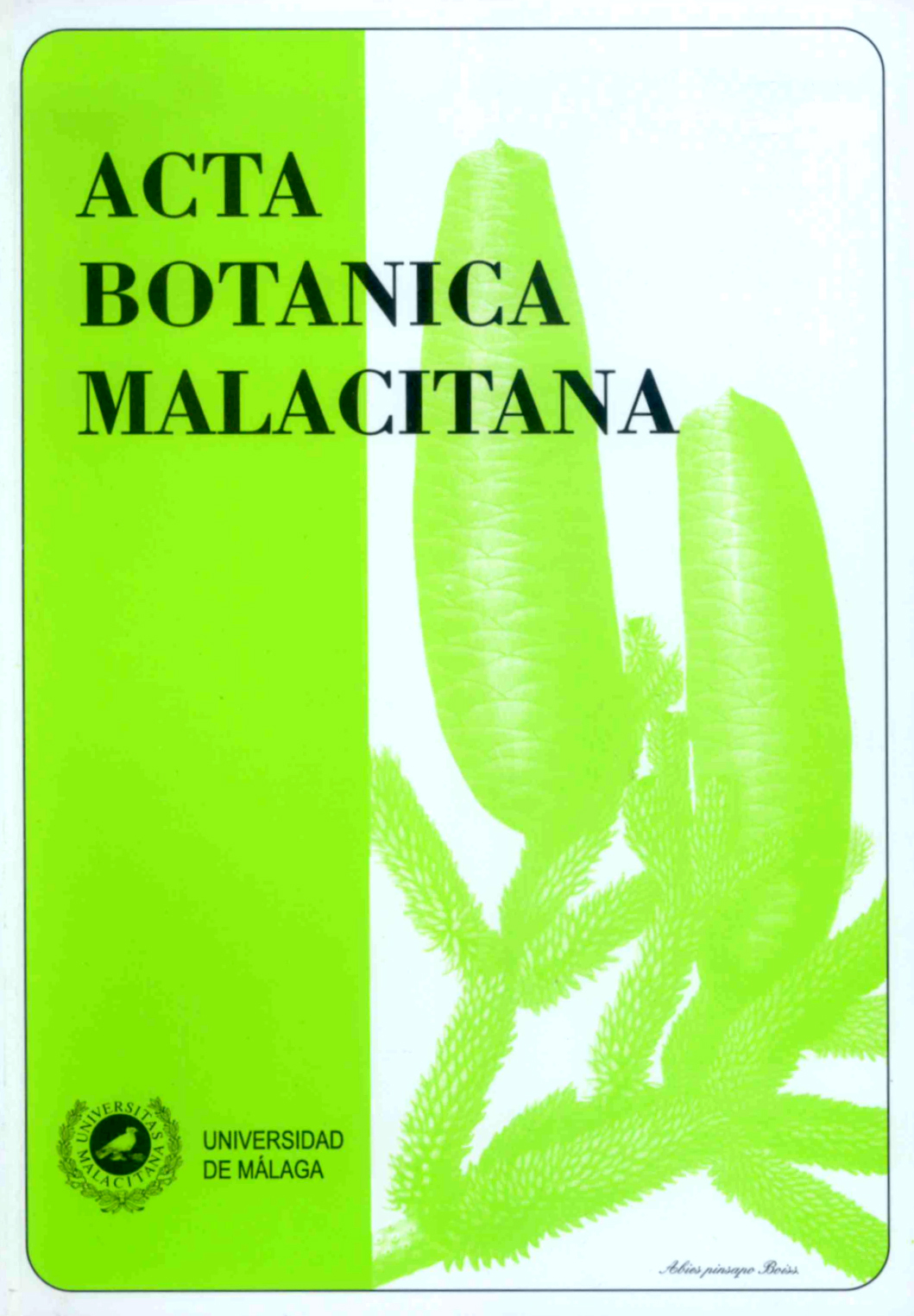Flora and vegetation of a unique suburban area: Mount San Anton (Malaga, Spain).
DOI:
https://doi.org/10.24310/abm.v39i1.2573Abstract
The main objective of this work is to elaborate two separate catalogs of flora and plant communities and their successional dynamics in the suburban area of Mount San Anton (Malaga, Andalusia, Spain). The macrobioclimate is Mediterranean with thermomediterranean thermotype and dry ombrotype. The study area is geologically composed of basic materials (Jurassic limestone) with small areas with siliceous materials (phyllites, schists) with mountainous landforms and altitudes between 50-511 m. It is placed in the phytogeographical Baetica province (Mediterranean region) in the Malacitano-Axarquiense sector and unit of the Montes de Malaga. The floristic checklist consists of 456 taxa, highlighting endemism with center of origin in the province of Málaga, as Cytisus malacitanus or Sideritis reverchonii, and 3 endangered species, highlighting Convolvulus valentinus (EN). 30 plant associations and communities have been inventoried, among which are considered as new syntaxa for the Malacitano-Axarquiense sector the alliances Lythrion tribracteolati and Resedo-Moricandion lanceolatae, represented by respective basal communities, and as representing the abundant scrublands, Saturejo malacitanae-Coridothymetum capitati var. with Sideritis reverchonii (endemism) and Cytisus malacitanus formations, also endemic. The successional dynamics is summarized in a climatophilous thermomediterranean series of Quercus rotundifolia and a group of permanent communities included in two edaphogenous and topogenous vegetation complexes. These complexes are developed in the frequent rocky habitats: one on the basis of crags and cliffs, lapiaz and skeletal soils (Rhamnus lycioides shrub formations, espartales with Stipa tenacissima, Coridothymus capitatus scrublands and escobonales with Cytisus malacitanus) and another in cliffs and rock crevices (characterized respectively by Asplenium petrarchae, Polypodium cambricum, Campanula mollis and Sedum sediforme).Downloads
Metrics
Downloads
Published
How to Cite
Issue
Section
License
Those authors who publish in this journal accept the following terms:
a. The authors will retain their copyrights and guarantee the journal the right of first publication of their work, which will be simultaneously subject to the Creative Commons Attribution-Non-commercial 4.0 license whose full text can be found at <http: // creative commons .org / licenses / by-nc / 4.0> that allows third parties to share the work as long as its author and its first publication are indicated, and as long as it is not for commercial purposes.
b. Authors may adopt other non-exclusive licensing agreements for the distribution of the version of the published paper (e.g., deposit it in an institutional telematic file or publish it in a monographic volume) provided that the initial publication in this journal be indicated.
c. Authors are allowed and recommended to disseminate their work through the Internet (e.g., in institutional telematic archives or on their websites) before and during the submission process, which can produce interesting exchanges and increase citations of the published work. (See The effect of open access)







1.png)
